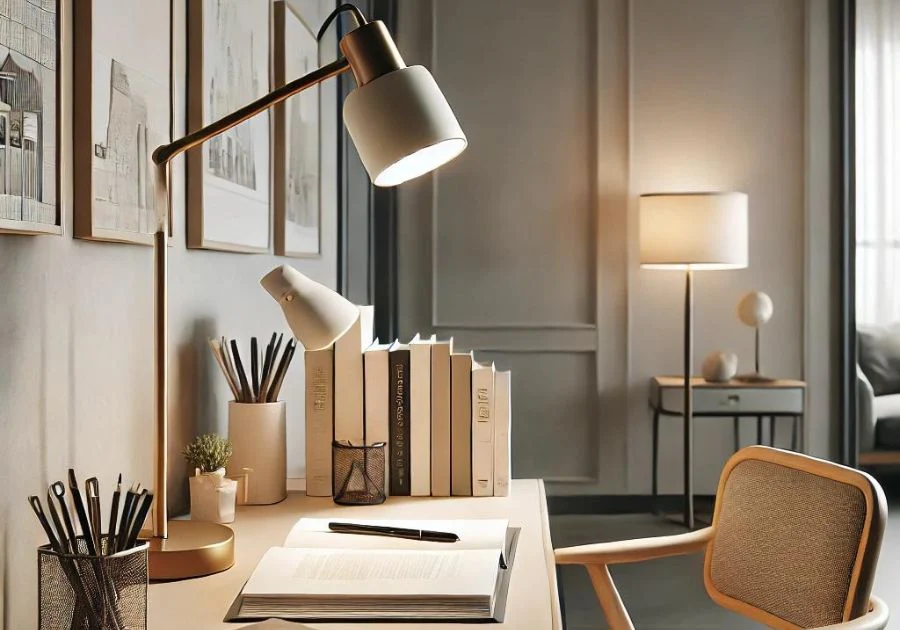Late-night study sessions demand more than just dedication—they require the right lighting. Whether you’re preparing for exams, working on creative projects, or diving deep into research, having a reliable night study table lamp can make all the difference. The right lamp doesn’t just brighten your workspace; it protects your eyes, enhances concentration, and even improves your sleep cycle when used wisely.
This blog will walk you through how to choose the perfect study table lamp to support your late-night grind, focusing on lighting type, colour temperature, design, and eye-care technology.
Illuminate Your Learning: Choosing the Right Type of Lighting
When choosing a lamp for studying at night, one of the first considerations should be the type of lighting it offers. Not all light is created equal, and the kind you choose can directly affect your productivity and comfort.
LED lighting has emerged as the top choice for most students and professionals. It is energy-efficient, long-lasting, and capable of emitting a consistent light without flickering—a major benefit for extended study hours. Compared to older incandescent or fluorescent options, LED lamps stay cool and consume far less electricity.
However, it’s not just about what the bulb is made of, but also how the light spreads. A good night study table lamp should provide focused, directional light without creating shadows. Go for a lamp that evenly illuminates your workspace without being overly harsh or spilling light all over the room. This way, you avoid disturbing others and keep your attention anchored on your work.
A Spectrum of Success: Understanding Colour Temperature
Colour temperature refers to how “warm” or “cool” the light appears, and it’s measured in Kelvins (K). For late-night studying, this detail matters more than most people realise.
Warm light (around 2700K–3000K) tends to be softer and more relaxing. While this might be great for winding down, it may not be ideal for staying alert and focused. On the other hand, cool white or daylight bulbs (ranging between 4000K and 5000K) mimic natural daylight and are better suited for mental tasks that require sharp attention.
A quality night study table lamp should strike a balance, offering light that is bright enough to keep you awake but not so blue-toned that it interferes with your ability to sleep afterward. Some advanced models even let you adjust the colour temperature according to your need—cooler for early study and warmer tones as the night progresses.
Style Meets Function: The Design and Flexibility of Study Lamps
Your night study table lamp should be more than just functional; it should fit your space and habits. The design, flexibility, and form factor of the lamp can significantly affect how convenient it is to use.
Look for lamps with adjustable arms and swivel heads. This flexibility allows you to direct the light precisely where it’s needed—be it a book, a laptop, or a sketchpad—without having to move the base. A compact or foldable design is especially beneficial if your desk space is limited or if you share your study area with others.
Touch controls, dimmable brightness, and USB charging ports are small conveniences that go a long way during late-night sessions. You shouldn’t have to fumble with complex switches or reach for distant power outlets when you’re mid-flow in a study sprint.
Also, the overall aesthetic of your lamp shouldn’t be overlooked. A sleek, modern lamp can uplift the ambience of your study space, making it a place you actually enjoy spending time in—even at 2 a.m.
Visionary Lighting: Navigating Eye Care Technology in Study Lamps
One of the biggest risks of late-night studying is eye strain. Staring at books or screens in poor lighting can cause headaches, blurred vision, and long-term damage. This is where eye-care technology in lamps becomes vital.
A good night study table lamp should offer flicker-free lighting and an anti-glare design. Flickering, even if not noticeable to the naked eye, can tire out your eyes and disrupt concentration over time. Anti-glare diffusers ensure that the light is soft and evenly distributed, reducing the harsh contrast between the lit and unlit areas of your desk.
Some lamps also feature automatic brightness adjustment based on ambient light, ensuring optimal lighting at all times. Blue light filtering is another useful feature if you’re working on a screen, as excessive blue light at night can suppress melatonin production and interfere with sleep.
Don’t underestimate how a seemingly simple lamp can safeguard your vision and health. Investing in eye-friendly lighting is a wise move for any night owl burning the midnight oil.
Final Thoughts
Choosing the perfect night study table lamp is about creating a lighting environment that supports clarity, comfort, and health. You can elevate your late-night productivity without sacrificing well-being by understanding the importance of lighting type, colour temperature, design flexibility, and eye-care features.
So, the next time you find yourself knee-deep in textbooks or sketching out a late-night idea, let your lamp be a beacon of focus and calm. After all, great things often happen under the right light.



